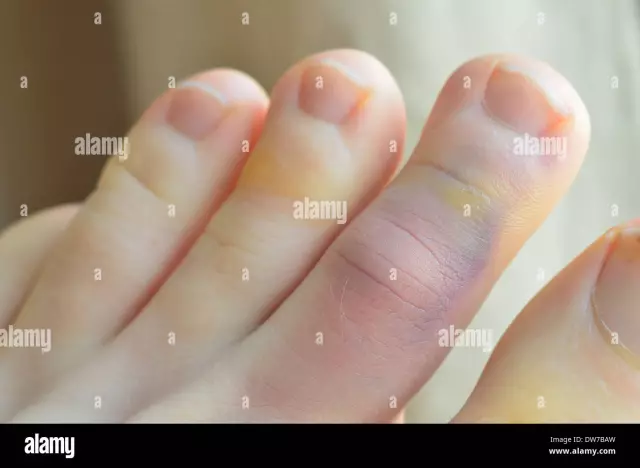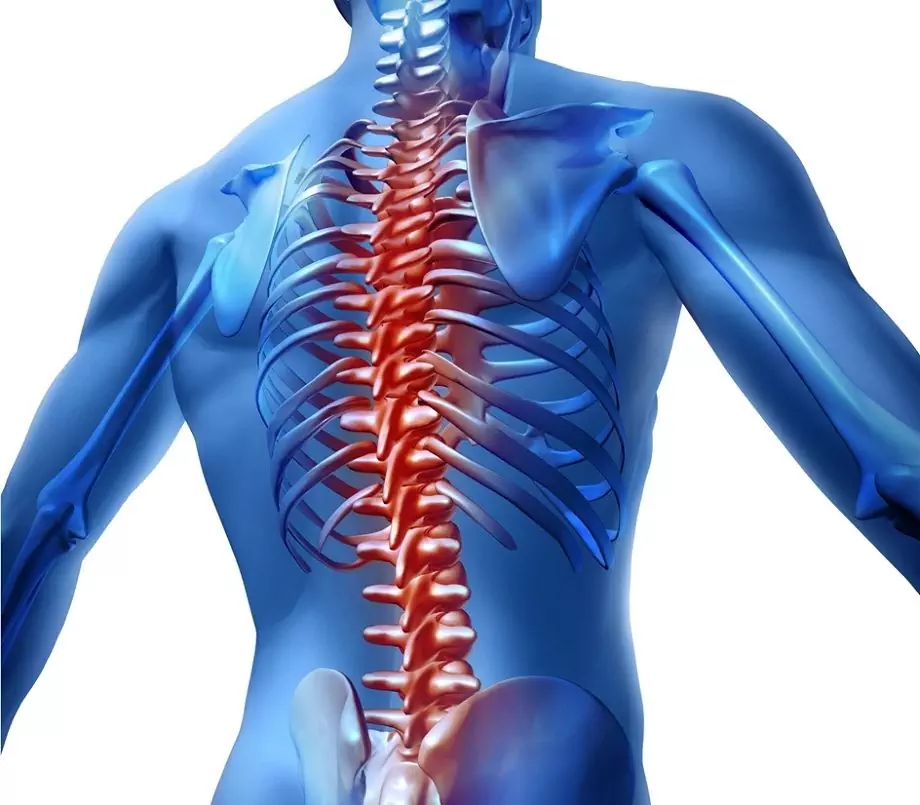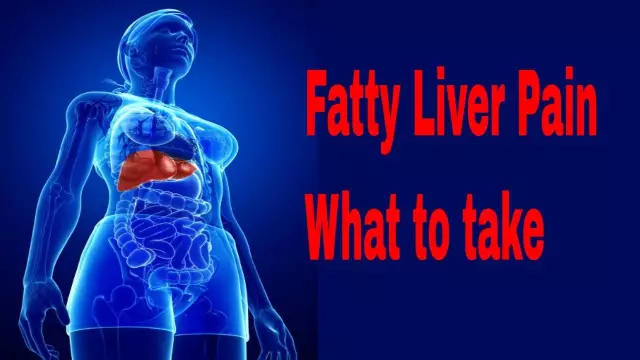- Author Rachel Wainwright [email protected].
- Public 2023-12-15 07:39.
- Last modified 2025-11-02 20:14.
Joint sprain: symptoms and treatment
Ligaments are special formations made of connective tissue. Their main function is to hold the joint and at the same time ensure its mobility in certain directions. Sprains of the ligaments of the joint are typical not only for professional athletes, such injuries are often found in everyday life. Most often, the ankle and shoulder joints are injured. This is due to the peculiarities of the anatomical structure, as well as increased stress on the joints.

Sprained ligament symptoms
A sprained joint is characterized by pain and limited mobility. For example, in the event of injury to the ligaments of the leg, the person cannot even lean on the foot. Severe acute pain is observed at the moment of injury. As a rule, the process is silent. If there is a complete rupture of the fibers, then a sonorous clap is clearly audible. When stretching, swelling and hyperemia of the skin can form, as well as small bruises at the site of injury. Sometimes there is a subfebrile body temperature, which ranges from 37.0 - 37.2 degrees.
Causes of Stretching
Ligament damage can occur in absolutely any person, even those who lead an inactive lifestyle. Ankle sprains can occur when:
- An unfortunate fall on ice, for example.
- Stumbling over an obstacle.
- Tucking legs (especially important in the winter season).
- Working with a lot of weight by virtue of the profession or when playing some sports.
The risk of this injury is significantly increased in women who prefer to walk in high heels or platform shoes. A hand sprain is usually caused by an unsuccessful fall that ends with a landing on the arm.
Athletes experience sprains much more often. Representatives of almost all sports are susceptible to injuries of this kind.
Note that previously suffered injuries significantly increase the risk of re-injury. Regardless of the type of injury, it is very important to promptly and fully heal the injury, even if it is a slight sprain.
Classification
In medical practice, this joint ligament injury is usually subdivided into several degrees:
- First degree. The fibers are not broken, only pain is observed, which disappears within 1 to 2 weeks. As a rule, there are no other symptoms.
- Second degree. Some of the fibers are completely torn, there is acute pain, swelling of the skin, sometimes small subcutaneous hemorrhages are noticeable. Independent movement is difficult, in order to fully move, you have to use crutches, stilts or other auxiliary attributes.
- Third degree. In this case, we are talking about a complete rupture of the ligaments. The pain is sharp and does not subside even when motionless. There is severe swelling, extensive hematomas, lack of support and impaired motor activity. In severe cases, surgical care may be required.
With the first or second degree of severity, conservative treatment can be dispensed with: local ointments or creams, exercise therapy, massage and other manipulations. This will help to quickly cope with pain and speed up the process of tissue regeneration. With the third degree of severity, the situation is more difficult, surgical assistance may be required. Recovery time is individual and depends on the characteristics of the organism and the location of the injury.
Diagnostics
It is rather difficult to independently understand that we are talking about stretching, and not about another pathology. If no improvement is observed within a few days, and the pain only intensifies, you should immediately consult a doctor. With such problems they turn to a traumatologist or orthopedist-traumatologist.
As a rule, to determine stretching, a specialist just needs to visually look at the injured area, palpate and take anamnesis. But still, for the final confirmation of the diagnosis, diagnostic manipulations can be prescribed, for example, ultrasound diagnostics or computed tomography. Only after that, the doctor prescribes a full treatment. Typically, the recovery period is 1 to 4 weeks.
How to relieve sprain pain at home
If the ligaments of the joint are stretched, first aid measures must be taken immediately. This will help avoid complications and speed up the recovery process. Immediately after injury, use a restraint such as an elastic bandage or splint. If you don't have anything suitable at hand, you can use regular cloth or gauze. Apply a bandage over the stretch.
Consider what to do with a sprain to relieve pain:
- At home, a cold compress will help reduce the intensity of pain. To cool the injured area, you can use ice or frozen food wrapped in a cloth. If there is nothing suitable nearby, place an arm or leg (depending on the location of the injury) in ice water. The compress must be applied for 10-15 minutes. This will prevent or reduce the appearance of edema and bruising.
- It is recommended to keep the damaged area on a hill. When the body is in a horizontal position, a rolled towel roll, pillow, bedspread, etc. should be placed under it.
- Provide maximum rest for the injured area. Try to limit your physical activity until the pain subsides.
- After 2 - 5 days (depending on the severity), gradually begin to massage the injured area. This will improve blood circulation and speed up the tissue repair process.
- As soon as the pain begins to subside, proceed with therapeutic physical activity. Build your ligaments gradually, start with light exercises and don't overdo it. If there is acute pain during exercise therapy, postpone this exercise for a couple of days. It is advisable to see a doctor.
At home, non-steroidal anti-inflammatory drugs, for example, Aertal® cream, which can be purchased at almost any pharmacy, help to cope with pain during sprains of the joint.
Aertal® cream
This drug is unique, since aceclofenac acts as an active substance in it, which is able to penetrate directly into the focus of the inflammatory process. This is the only non-steroidal anti-inflammatory agent in the form of a cream on the territory of Russia, which is based on this active component. The cream for external use is available in compact tubes, has a white color and a uniform consistency.

Aertal® cream is designed to eliminate local pain due to traumatic injuries and sports injuries, to prevent the development of edema and erythema. The cream helps to reduce the intensity of the inflammatory process during sprain.
In case of sprains, Aertal® cream is recommended to be used 3 times a day. We squeeze a small amount of cream onto the hand (the amount depends on the scale of the injury) and rub it into the skin of the injured area in a circular motion. The active substance is absorbed from the application area. The drug gradually accumulates in the absorption zone, which contributes to an increase in anti-inflammatory activity. The active component of Aertal® cream gradually enters the bloodstream in a minimal amount, so the risk of side effects, including for the gastrointestinal tract, is minimal.
This remedy is effective not only for sprains of the joints, but also for various inflammatory diseases of the musculoskeletal system. The established clinical efficacy of Aertal® is complemented by good tolerability.
Found a mistake in the text? Select it and press Ctrl + Enter.






